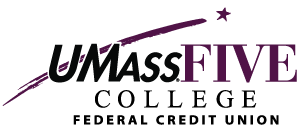Just out of college, I had a
tremendously hard time making ends meet. I had a wage and hours that, as a
college student I found appealing but as a college graduate didn't work. I had
a boat load of student debt, and some months had a hard time paying rent. I was
acutely aware of two things:
- I needed to earn more money
- I was pretty good at computers
It's amazing what perspective can
accomplish. Looking back, I wanted to make hundreds of dollars a week working
with computers. However, I never put a great deal of effort into building a
clientele. Even so, just by knowing that I wanted to make money working on
computers, and sharing that with friends, co-workers, and acquaintances, I
started getting gigs. Not bad at all! $50 here, $150 there, and my wallet
began to feel a little happier. The jobs were infrequent, which concerned me,
but that didn't matter so much when I had the opportunity to make relatively
easy money in a short period of time, all for a skill as natural to me as
riding a bicycle, but as foreign to others as Mars and the treks of the Curiosity
rover. Not that I was the best at fixing computers, but when you're starting at
less than zero, anyone who has half a clue is probably better. Now, in my current career, I have no
need to do computer work for side money. Still, looking back, I would do some
things differently when looking for side income. Whether you're looking at
fixing computers or freelance writing, these are things you may want to keep in
mind:
1. Time is
money: Never is this more true than in the
world of the entrepreneur. The time spent working on improving your web presence, or reaching out to companies,
should be counted along with the time spent actively earning money. If you
devote a total of ten hours a week, and you earn $200 for two hours of work,
you've just earned $20/hour, not $100/hour. Still a good hourly wage, while
being more accurate. This theory also works for students applying for
scholarships: Search and apply for 20 hours to five different scholarships, and
win one for $500? You just earned $25/hr!
2. Budget
side income just like regular income:
There may be a lot of things begging for your side income's attention: Bills,
entertainment, birthday gifts, and more. However, if you're budgeting to make
ends meet or take some of the pressure off, make sure you're including it as a
source of income in your budget. That way you're keeping honest. It may not be
the most fun way to go about things, but you can still budget for nice dinners
and do so without regret. If you've tried it the other way, you know you'll
thank yourself later. Trying to figure out how to budget income when it's
unstable? The best way is to average out your income. It's probably better to
be conservative in your estimates as well. If you have excess, save it so that
when you have a shortfall you won't be struggling to make ends meet!
3.
It never
hurts to work on self-improvement:
It may cost a little bit of money, but take a class! There are many free
classes or affordable online classes that won't take much time out of your
schedule, but if you don't have much knowledge about marketing, that could be a
great place to start. And, of course, adding knowledge within your field is a
good thing.
There are no doubts many people with far more
knowledge than me about the ins and outs of managing a successful side-gig, but
just because you earn good money and have a good clientele doesn't mean you're
managing your finances wisely. By not neglecting your finances, you will truly
make the most out of your side gig, and avoid the mistakes I made in my
side-income foray.
 You didn't misread the tagline. This tip comes from a member who found a slightly unconventional, but brilliant, way to quit credit:
You didn't misread the tagline. This tip comes from a member who found a slightly unconventional, but brilliant, way to quit credit:




